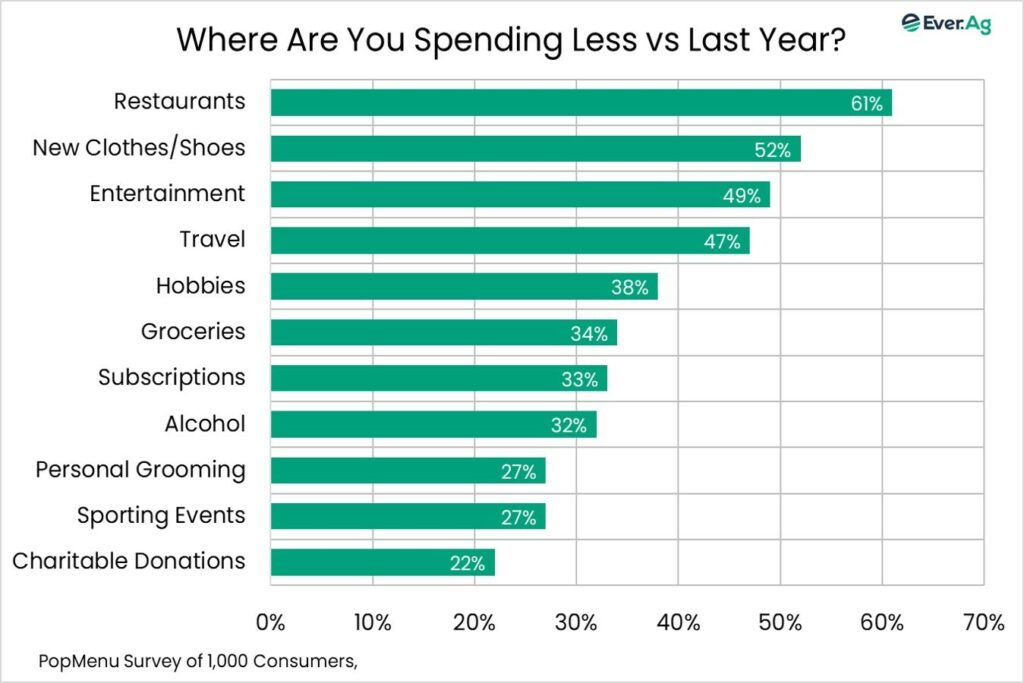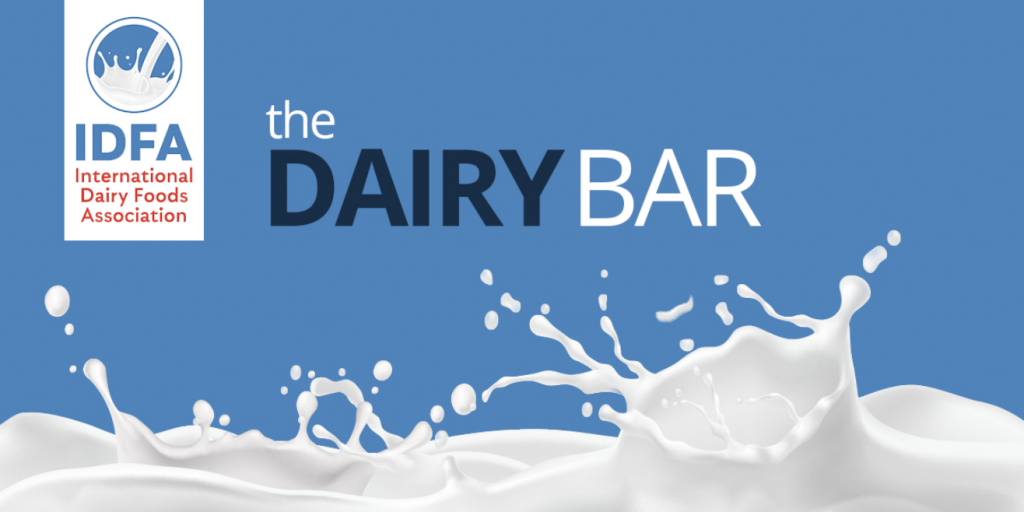Read the latest issue of The Dairy Bar, a bi-weekly report from IDFA partner Ever.Ag. The Dairy Bar features spotlight data, key policy updates, and a one-minute video that covers timely topics for the dairy industry.
The Dairy Bar: Hydrating with Fluid Milk; Consumer Spending Trends; and New Zealand Milk Output in a Minute!

Quick Bites: Where Consumers Are Spending Less
- There are some signals that consumers may be feeling slightly better about the general U.S. economy. In fact, the final June reading for the University of Michigan Consumer Sentiment survey was 60.7, well above May’s 52.2. This 16% surge was the first increase in six months, although the index was still below the post-election bump recorded in December 2024.
- Restaurant traffic is another indicator of consumer confidence, and visits were up 1% in May compared to the year before. This was the first year-over-year gain since January. Grocery store visits were also up 3% year-over-year, but that was down from +4% in April, so it appears that at least a few people were choosing to eat out more rather than cook at home.
- A rapid return to restaurant dining may not be in our future, though. A June poll from PopMenu asked 1,000 consumers where they were spending less compared to the year before. Their number one answer? Restaurants. Overall, 61% of respondents said they are spending less eating out. That was nine percentage points ahead of new shoes and clothes, the second highest category.
- As for the summer, 44% of survey participants said they were going to reduce restaurant spending compared to last summer. Just 18% expect to increase spending, while 38% don’t plan to change.
- Restaurants help move cheese, but they are also important for beef sales. But lately, poultry seems to be winning the race. Placer.ai reported restaurants centered on chicken are gaining market share compared to burger chains. Food service locations focused on chicken have an 18.3% share of visits, up from 15.0% in 2019. On the other hand, burger chains have a 59.8% share this year, down from 62.3% in 2019. A lot of beef is still sold in restaurants, of course, but consumer preference and willingness to eat out certainly have an impact on volume and value sold.
Today's Special
- We’ve been talking about hot weather and its impact on cows as abnormally warm temperatures spread across the Midwest. When temperatures rise, cows are not comfortable. They eat less and, in turn, produce less milk, and it can take them a while to recover from that heat stress. Hot weather is also hard on people, and one factor for staying safe is to stay hydrated.
- Water most likely pops to mind when one thinks of hydrating drinks. And yes, water quenches thirst quickly and is vital for body maintenance. However, there are other beverages - like milk - that perform better than water in terms of remaining in the body longer after ingestion.
- While people continue to include more dairy products in their diets, fluid milk consumption has not been part of that growth. In fact, fluid milk intake has been trending downward for more than 70 years. It’s not all bad news, though.
- Total fluid milk sales were up in 2024 for the first time in 15 years, with whole milk and flavored milk helping push sales higher. And year-to-date through April, whole milk sales are up 0.4%, while flavored milk sales are up 4.3%. In terms of hydration, chocolate milk is often promoted as a post-exercise recovery drink because it replenishes fluids, essential nutrients, and electrolytes.
- Studies into the hydrating powers of milk could help fluid sales in the future. According to a study from Scotland, milk is more hydrating than plain water because it contains a few key components: sugar lactose, protein and fat. These components slowly empty the stomach, keeping fluids in the body longer. Sodium in milk also helps the body retain water. While some sugar seemed to help hydration, a lot was not better. That’s why beverages like juices and soda do not perform as well as milk in terms of hydration.

